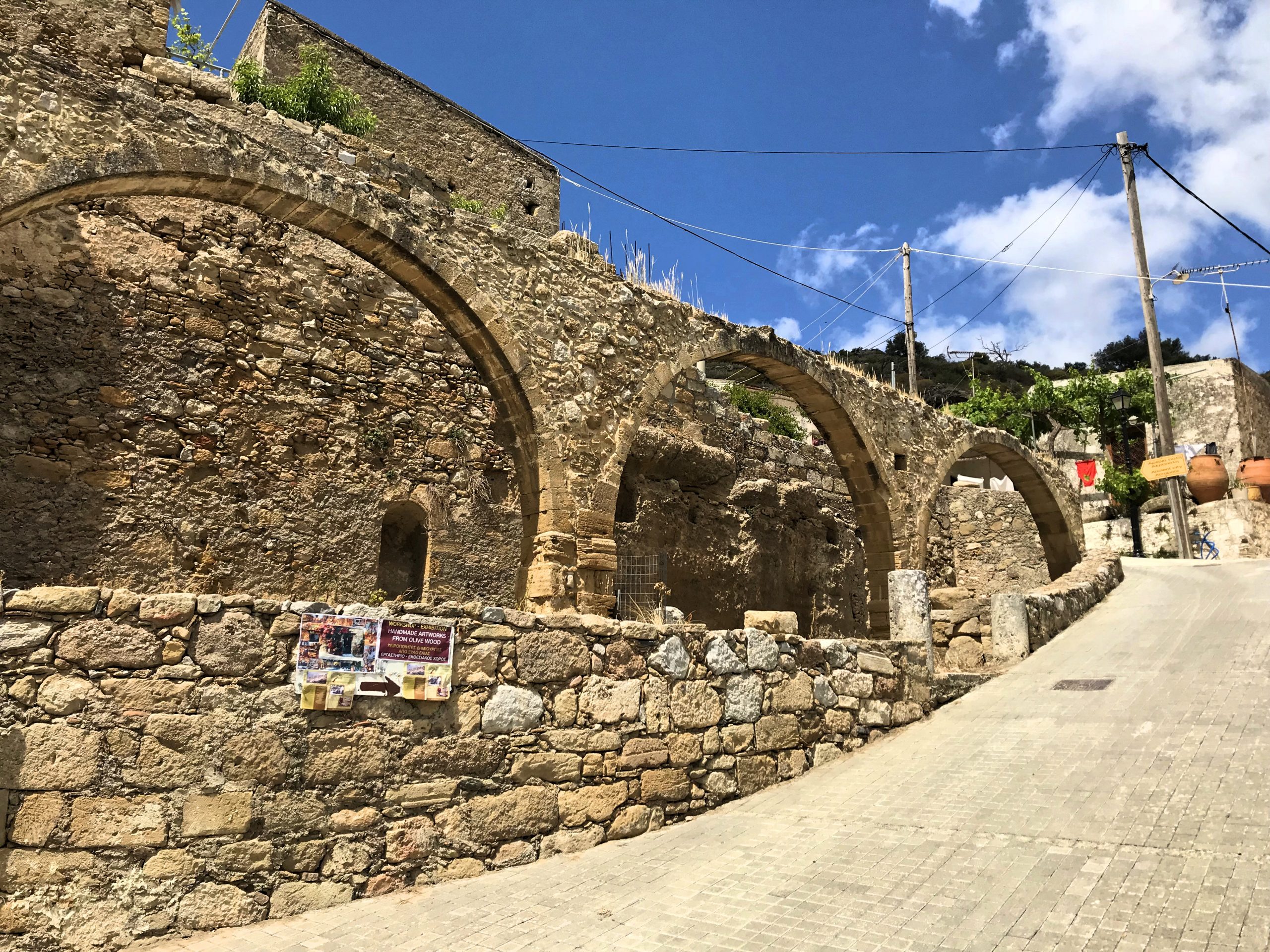
Polyrrhenia is a traditional mountainous village located only 6 Km from Kissamos. The first name of the village was Upper Paleocastro but was named Polyrrhenia because it is located near the archaeological site.
Polyrrhenia was a city-state that flourished from the Minoan times to Roman times. It was the most important city in western Crete after Kydonia. It was an enemy of Knossos and Kydonia and of the neighbouring harbour of Falasarna.
The city of Polyrrhenia was strongly fortified in Byzantine times. Polyrrhenia played an important part in Roman times as well, mainly due to its strategic decision to ally itself with the conquerors and assume a leading role in the area, defeating even its oldest enemy, ancient Cydonia, now Chania.
From this period the Roman aqueducts survived. The water pipes run under the hill on which the city stands, and are combined with a network of stairs and underground exits which must also have formed part of the defences.
The semi-circular tower in the walls at the entrance to the village is thought to have been another combined defensive and hydraulic work. The tower has been badly damaged, and its facing stones were used as building materials for the local primary school in the early 20th century.
In Polyrrhenia you will also find the ancient cemetery of the village which is just before the village.
How To Get There
A nice short drive from Kissamos to Polyrrhenia ( 15-20 min ) by car. Narrow countryside roads with lovely views along the way.
-
Allow yourselves more than 3 hours to explore the entire Polyrrhenia village.
-
Have a bottle fo water with you for the walk uphill.
-
On top of the hill, there is a nice small taverna to rest.